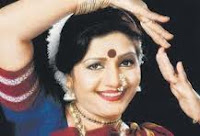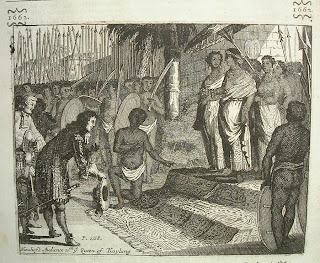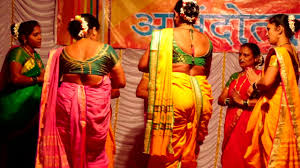Significance of Thiru Onam Festival







Significance of Thiru Onam Festival
All over Kerala State one can get to listen to the popular folk song "the folk song, Maaveli Naadu Vannidum Kaalam (When Maveli, our King, ruled the land)" sung. This marks the welcoming of King Maveli.
Onam – an important festival of Kerala state in India. It falls during the first month of the Malayalam calendar which is Chingam or Singam (August–September) and marks the homecoming of the legendary King Maveli or Mahabali. This festival is celebrated for ten days and is linked to many elements of Kerala's culture and tradition.
Onam is celebrated in gratitude for the rewards of the land, for all that nature provides for the people. On a slightly different level, the festival also keeps alive the legend of a compassionate ancient ruler called Mahabali, who, it is believed, revisits his subjects - the people of Kerala - during Onam. It is celebrated as a harvest festival and is celebrated with joy and enthusiasm all over the state by people of all communities. The best part of the festival is that it is a secular festival so people from different communities and religion can take part in it. The first day is called Atham and tenth day, Thiruonam are most important of all. Highly structured feasts, folk songs, elegant dances, energetic games, elephants, boat racing and flowers all are a part of the dynamic festival called Onam. Intricate flower carpets; elaborate banquet lunch, snake boat races, Puli Kali, and the Kaikottikkali dances all play a part in the festival.
Rich cultural heritage of Kerala comes out in its best form and spirit during the ten day long festival. It is indeed very privileged to be a part of the grand carnival. People of Kerala make elaborate preparations to celebrate it in the best possible manner. The most impressive part of Onam celebration is the grand feast called Onasadya or Sadya, prepared on Thiruonam. It is a nine course meal consisting of 11 to 13 essential dishes. Onasadya is served on banana leaves and people sit on a mat laid on the floor to have the meal. It showcases the unity among people. Another enthralling feature of Onam is Vallamkali, the Snake Boat Race, held on the river Pampa. It is a colourful sight to watch the decorated boat oared by hundreds of boatmen amidst chanting of songs and cheering by spectators. There is also a tradition to play games, collectively called Onakalikal, on Onam. Folk performances like Kummatti kali and Pulikali add to the zest of celebrations.
Atham is the first day of the festival. People complete the rituals of Atham by taking early bath and offering prayers in temples. The breakfast for this day consists of steamed bananas and fried pappadams (appalams or pappad). This breakfast continues for the remaining days till Thiru Onam. A swing (Oonjal) is knotted over from high branch and youngsters take great pleasure in swinging and singing swing (Oonjal) songs.
The highlight of Atham is ladies start making pookalam from this day. Pookalam also called Athapoo- is making of elaborate floral mat in front of courtyard. Selecxtionsof flowers for each day is important and it is done keeping in view of deities worshipped. It is also the time for showcasing creativity. Again, a grand procession called Athachamyam is carried out on this day. Elephants processions, folk art and folk dance, marks this Athachamyam a fabulous event. Chithira is the second day of the onam celebration. Third day of the ten day carnival of Thiru Onam is called Chothi or Chodi. On this day all are busy with shopping and buying new clothes. Gifts are also purchased for everyone in the house including the servants. Vishagam or Visakam marks the fourth day. Women get engaged in making various types of pickles and pappadams. Anizham is the fifth day of Onam celebrations. High point of the day is the grand Snake Boat Race event called Vallamkali, which takes place on the fifth day of the Onam. The hugely popular competition happens on the banks of the river Pamba at Aranmulla. Triketta or Thriketa the sixth day, marks the jubilation through various cultural programmes and social gatherings organized by various cultural societies all over the state. Seventh day of Onam celebration is known as Moolam. Festivity look can be seen all around the state as shops, malls and commercial streets are decorated with colourful lights. Pooradam, the eighth day; this day is also called Poorada Uttigal. The size of Attha poo gets bigger in size with additional design. On this day small pyramid shape called MA is made out of clay (this making of pyramid shape clay or often out of turmeric paste is made before commencing any pooja or festival in South India. This symbolizes Lord Ganesha- who is remembered and worshiped first, as he is the lord clearing all the obstacles in our life). Utradam or Uthradam marks the ninth and last but one day of the Onam festival. There is joyousness all around the state to welcome The King Mahabali Chakravarthy. Tenth day is Thiruvonam Aashamsakal.
According to the legend, Kerala witnessed its golden era during the reign of King Mahabali. He was that much highly regarded among the subjects that even the Gods under Indra became jealous of Mahabali, they approached Mahavishnu claiming that Mahabali is now equivalent to an Indra. Since a world with two Indras represents imbalance, Mahavishnu assumed the form of a dwarf: the Vamana avatara had tricked him to Pathalam, the Underworld. However, as Mahabali is equal to an Indra, he is to wait until the next Yuga where he would be the Indra. In the meantime, with the grace of Mahavishnu, Mahabali visits his people on an annual basis. Mahavishnu serves Mahabali as a gatekeeper in the world of Pathalam as the Lord himself serves his greatest devotees.
There is another story related to the celebration called Boat Palliodam. Long ago, some people traveling in the boat called palliodam, when all of a sudden the boat got stuck in the bend in the river, the oarsmen tried to move the boat but in vain. There was a spiritual head, Bhattathiripad who sensed a bad omen as the boat was loaded with food packs. He came to the river bed and saw a hut with faint light glowing. He then visited the hut and saw a poor woman weeping with her hunger children. He then immediately, pallivodam and brought food packs and gave it to her. When the woman and her children were happy the boat palliodam could easily maneuvered to the main course of smooth sailing. From then the practice of feeding poor on Onam day started.
Another story behind is about the vanishing boy near Aranmulla temple. Near Pampa River from Aranmulla, the head of the Katoor Mana, a Namboodari family resided. The head after his daily prayers fed poor as part of his ritual. On one Onam day, he waited for long but no body turned up. He started praying Lord Krishna in order to help him in completing his daily rituals. As soon as he opened his eyes, he saw a small boy and delighted offered him new clothes and sumptuous food to eat. This little boy disappeared after the meal. The head went in search of the boy and again sighted him near Aranmulla temple. As he got closer to him, the little boy disappeared again. So, the head came to know that Lord himself in disguise came to his house and took relished his food and offerings. Even today, the practice of food to Aranmulla temple is offered on Onam day.
Puli Kali –Puli means Tiger and Kali means to play. It is also known as Kaduvakali is a colourful recreational folk art from the state of Kerala. It is performed by trained artists to entertain people on the occasion of Onam. On the fourth day of Onam celebrations, performers painted like tigers and hunters in bright yellow, red, and black dance to the beats of instruments like Udukku and Thakil. Literal meaning of Pulikali is the 'play of the tigers' hence the performance revolves around the theme of tiger hunting. The folk art is mainly practiced in Thrissur district of Kerala. Thrissur is also popularly known as center for cultural arts and performances.
Sadhya means banquet. It is a typical feast of the people in Kerala. A Sadya is a big feast associated with a special occasion, such as a marriage, birthday, childbirth etc. A Sadya is traditionally a vegetarian meal served on a plantain or banana leaf; people eat sitting cross-legged on the floor. Sadhya can have 24 - 28 dishes served in it. Modern day Sadhya is restricted to 9-12 items of food. The dishes are plain boiled rice, many curries, papadum, plain yogurt or buttermilk, banana or plantain chips, and two or more sweet dishes. The curries are made of different vegetables and have different flavourings. They can be made of yogurt, bitter gourd, mango, jaggery, etc. The reason for including so many dishes in the Sadhya is to ensure the likes of family members. The main course of Sadhya includes Parippu, Sambar , Rasam Aviyal, Kaalan, Olan, Koottukari, Kichadi, Pachadi, Injipuli, Thoran and Pickles (Achar).
!!!Happy Onam Greetings!!!











Comments